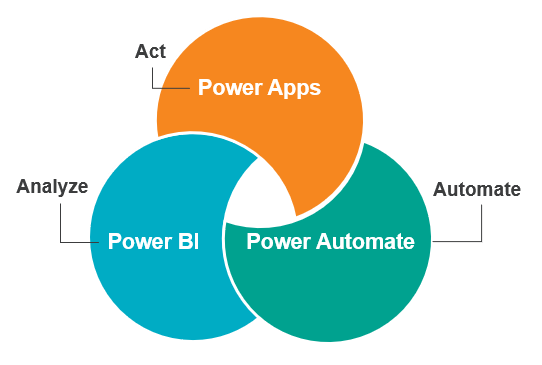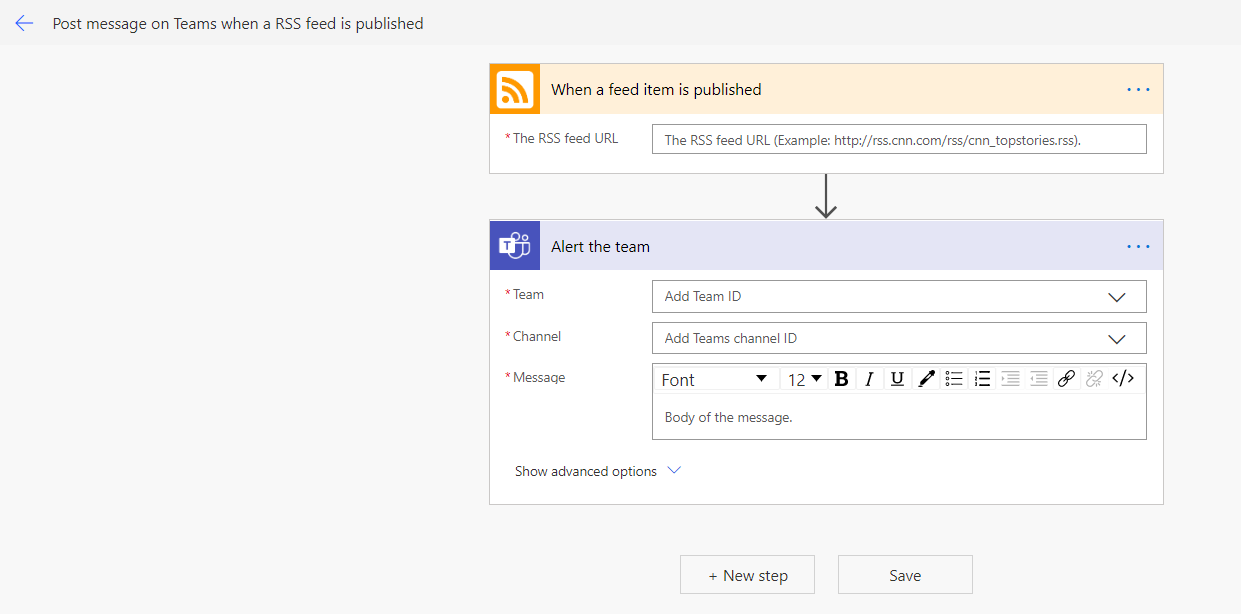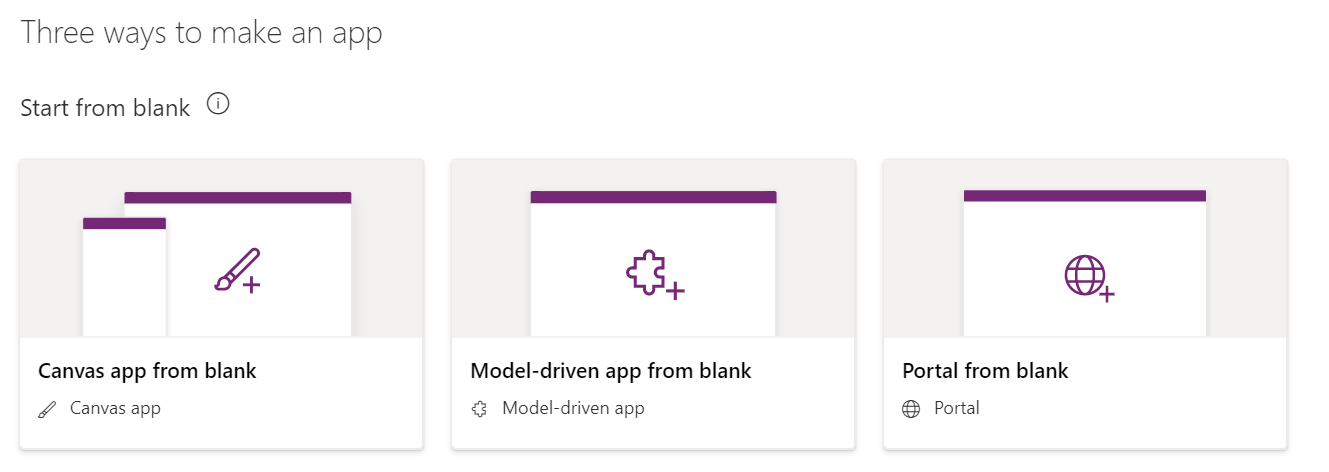Don’t miss our webinar, Transform your Business Processes With Microsoft Power Platform, happening LIVE on Thursday, November 19, 2020 at 1 p.m., eastern. Click here to register or view the session on-demand after that date.
Organizations are starting to embrace the value of using data to drive business outcomes. They have adopted the cloud to store mass quantities of data from multiple sources, but now the question is how to make that data work for their business most efficiently? Microsoft Power Platform enables organizations to analyze data, build solutions, automate processes, and create chatbots to improve and innovate their operations. When combined, the various apps let organizations build powerful end-to-end business solutions that integrate with hundreds of cloud-based and locally managed applications and services.
Microsoft Power Platform is Microsoft’s approach to no code/low code, user-friendly tools that support better automation and information management. Organizations and individuals using Microsoft Office 365 can incorporate Microsoft Power Platform functionality into large-scale projects or in their routine, day-to-day business processes. In this blog, we will share an overview of Microsoft product offerings that are available to most organizations already utilizing Microsoft Office 365 subscriptions.
Microsoft Power Platform
Within Microsoft Power Platform, there are four main components that can be integrated to improve business processes: Power Apps, Power BI, Power Automate and Power Virtual Agent. Additionally, some related features to the Power Platform include: Common Data Service (CDS), the AI Builder, Common Data Model, UI Flow and Connectors.
The primary focus in of this blog will be understanding the benefits and capabilities of Power Apps, Power BI and Power Automate.

Microsoft Power Automate
Microsoft Power Automate (previously known as Microsoft Flow) is the automation component of the Power Platform. This tool allows users to create automated data flows between different services. Within Microsoft Power Flow, users will find data connections to many well-known services such as LinkedIn, Salesforce, Microsoft Dynamics 365 and SAP. For those customers who are unable to find a service to connect to, Microsoft provides the ability to create a custom connector, an interface for systems to communicate within the power flow.
Since some companies may not want to create their own automation and workflow, Microsoft also offers a variety of flow templates that require populating any relevant information and credentials for connectors (as needed). These templates can be as basic as sending a daily reminder email to teammates around a Microsoft Project Planner task or may involve more complex flows like requesting a manager’s approval for a leave of absence. The example below shows a template that will send an update to a Microsoft Teams site anytime a feed is published on a selected URL.

Why is Power Automate a key resource to any company open to new technology?
Power Automate is a low code/no code automation tool that is customizable with ready-to-use templates. A major benefit of using Power Automate is the ability to easily connect to the current suite of Microsoft products. For companies concerned with making an investment in Power Automate, Microsoft Power Platform is a great place to start as it is offers a number of free trials and community licenses through Office 365 that allows employees to easily explore innovation.
Microsoft Power Apps
Easily create apps with very little app development experience
The Power Apps component of the Power Platform has made it simple for any user to design and create his or her own apps. Any Office 365 user can create an app for their company or team to use. There are three types of apps that can be created:
- Canvas app – Creates an app that can be used on any iOS or Android device, web browser, Microsoft Team or SharePoint Page.
- Model-driven app – Designs an app based on the desired components, with the capability to interact with Microsoft Dynamics or a Common Data Service. These apps can also be added to a Microsoft Team or Channel.
- Portal – Creates a webpage that permits users from outside of the organization to create data and browse content.
Choosing the right app is dependent on each organization’s requirements and the overall outcome anticipated for end users.

Microsoft Power BI
Power BI is widely used as companies collectively share insightful data with their employees, teams and leaders. With the connection of Power BI to both Power Apps and Power Automate, real-time data sharing can be made simple, clean and consistent for end users. As an example, a company may choose to connect Power BI to data from SAP HANA that contains information related product sales for all regions. With this data connection, the user can create a simple dashboard view of the sales generated by each region – allowing employees to easily interpret the data and analyze the organization’s best-selling products.
Key Considerations
Microsoft Power Platform Security
Security is an important piece of any project. Common Data Service (CDS) is the preferred platform when creating Power Apps. When using the CDS, Power Apps gives users the ability to enable various types of security that can be applied within each application created, including role-based security, record-based security and field-level security. If all security types are implemented in the application, access can be restricted in the following ways:
- the ability for a user to perform individual tasks
- the ability for the user to view or update specific records
- the ability for the user to view or update high-impact fields defined by the business
An additional way to secure data is by implementing Data Loss Prevention (DLP) policies. DLP Policies feature group connectors that allow data sharing in Power Automate or Power Apps. DLP policies prevent the sharing of data between any connectors that are not in the same group.
If security is implemented appropriately, each business process or data repository within these applications should have little concern around user and data security.
Accessibility
Some Office 365 licenses include the ability to use Microsoft Power Platform, which provides easy access to these tools mentioned in this blog by following the below steps:
- Launch Office 365 and log in or create a Microsoft account. Once logged in manually type “Power” in the search bar
- Select the Application. e.g. Power BI, Power Apps, or Power Automate
- Start automating and presenting business processes and data.

Conclusion
Microsoft Power Platform demonstrates the availability of automation, app creation and data presentation. There are many tools on the market for RPA/IPA and app creation, but with Microsoft Power Platform, the tools are right at the user’s fingertips. Power Platform enables companies to incorporate process automation with low-code development and increase productivity, particularly those already using Microsoft enterprise applications such as Dynamics 365 For Finance and Operations (D365FO) or Dynamics 365 Customer Engagement (D365CE).
To learn more about Protiviti’s Microsoft consulting services, contact us.





